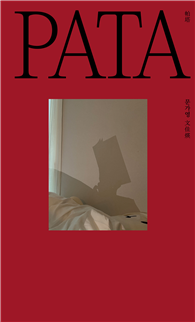This memoir reveals a great deal about the character and personality of an individual who lived his life with a thoroughgoing sense of honor. As a midshipman he was a leader in devising the Naval Academy’s honor concept. During his five and a half years as a prisoner of war in Vietnam, he was stalwart in his resistance to his captors. His achievement has been honored by the naming of the guided missile destroyer USS William P. Lawrence (DDG-110). His oral history is a treasure trove of material on the Naval Academy, both during Lawrence’s midshipman years and in his tenure as superintendent, during which the first women graduated. Throughout the volume, the values of his native Tennessee come through. dmiral Lawrence told his story with integrity and candor. After his graduation from Annapolis in 1951, Lawrence took flight training and became a member of Fighter Squadron 193 (VF-193), 1952-55, during a time of pioneering work in night carrier operations by jets. Among his shipmates was future astronaut Alan Shepard. Lawrence was subsequently a test pilot for the F8U-3 Crusader III and, on the staff of Commander Carrier Division Six, served as flag lieutenant to future Chief of Naval Operations Thomas H. Moorer. After duty in 1960-61 in Fighter Squadron 101 (VF-101) to prepare for the fleet introduction of the F-4 Phantom II, Lawrence took a break from naval aviation to serve as navigator of the heavy cruiser USS Newport News (CA-148). While he was in Fighter Squadron 14 (VF-14), 1962-64, it transitioned from the F3H Demon to the F-4. He served 1964-66 as executive assistant to Commander in Chief Strike Command, Army General Paul D. Adams. Lawrence was XO and then CO of Fighter Squadron 143 (VF-143) from 1966 until he was shot down over North Vietnam in 1967, then was a POW until his release in March 1973. After being repatriated, he spent a year at the National War College, was selected for flag rank, and in 1974-75 commanded Light Attack Wing Pacific Fleet. From 1975 to 1978 he was in OP-05, the office of the DCNO (Air Warfare) in the Pentagon. From 1978 to 1981, as a vice admiral, Lawrence was superintendent of the Naval Academy. He commanded the Third Fleet, 1981-83, including running two multi-carrier exercises in the North Pacific. His final tour of active duty, 1983-85, was as Chief of Naval Personnel when John F. Lehman Jr. was Secretary of the Navy. Lawrence retired on disability because of a case of depression that lasted until his cure in 1989. The oral history discusses his illness openly. His post-retirement activities included writing, teaching, speaking, and serving as president of the Association of Naval Aviation.
| FindBook |
有 1 項符合
Reminiscences of Vice Adm. William P. Lawrence, USN (Ret.)的圖書 |
 |
Reminiscences of Vice Adm. William P. Lawrence, USN (Ret.) 作者:Lawrence 出版社:US Naval Institute Press 出版日期:1980-11-15 語言:英文 規格:精裝 / 670頁 / 27.94 x 21.59 x 3.66 cm / 普通級/ 初版 |
| 圖書館借閱 |
| 國家圖書館 | 全國圖書書目資訊網 | 國立公共資訊圖書館 | 電子書服務平台 | MetaCat 跨館整合查詢 |
| 臺北市立圖書館 | 新北市立圖書館 | 基隆市公共圖書館 | 桃園市立圖書館 | 新竹縣公共圖書館 |
| 苗栗縣立圖書館 | 臺中市立圖書館 | 彰化縣公共圖書館 | 南投縣文化局 | 雲林縣公共圖書館 |
| 嘉義縣圖書館 | 臺南市立圖書館 | 高雄市立圖書館 | 屏東縣公共圖書館 | 宜蘭縣公共圖書館 |
| 花蓮縣文化局 | 臺東縣文化處 |
|
|
圖書介紹 - 資料來源:博客來 評分:
圖書名稱:Reminiscences of Vice Adm. William P. Lawrence, USN (Ret.)
|










